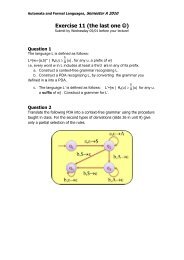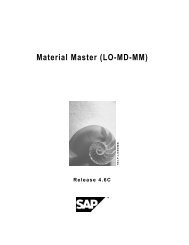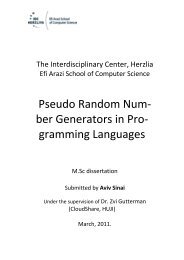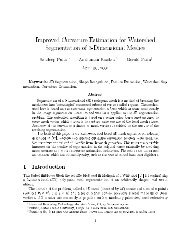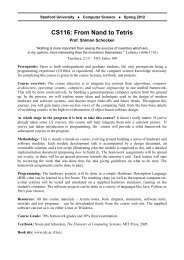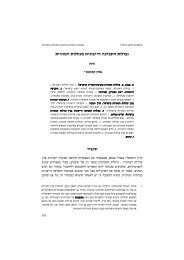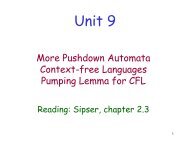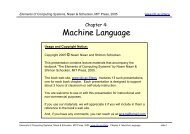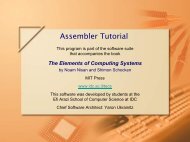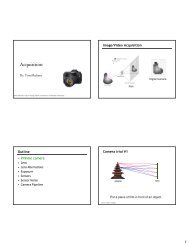Partitioning 3D Surface Meshes Using Watershed Segmentation
Partitioning 3D Surface Meshes Using Watershed Segmentation
Partitioning 3D Surface Meshes Using Watershed Segmentation
Create successful ePaper yourself
Turn your PDF publications into a flip-book with our unique Google optimized e-Paper software.
316 IEEE TRANSACTIONS ON VISUALIZATION AND COMPUTER GRAPHICS, VOL. 5, NO. 4, OCTOBER-DECEMBER 1999<br />
curvature) at each node, a variety of different approximations<br />
and preprocessing algorithms can be applied to both<br />
the mesh itself and the height function. For instance, an<br />
iterative smoothing process could be applied to the height<br />
function in order to reduce the effects of noise and<br />
approximation errors. Such preprocessing is an area of<br />
ongoing investigation and is beyond the scope of this paper.<br />
Fig. 9. Creation of edge-based topology based on original mesh.<br />
triangle regions are established, with each triangle being<br />
evaluated for region membership based on whether all<br />
three of its edges belong to the region in question.<br />
Because the watershed algorithm is independent of how<br />
one structures the mesh or computes the height function (or<br />
5 RESULTS<br />
In this section, we present the results of using the watershed<br />
algorithm to perform segmentation of surface meshes. We<br />
show initial results obtained prior to region merging;<br />
examination of these oversegmented solutions demonstrates<br />
the need for region merging. The algorithm's<br />
capability to successfully segment simple geometric shapes<br />
is demonstrated. The performance of the algorithm in the<br />
presence of noise is analyzed. The sensitivity of the<br />
segmentation to the user-defined threshold is shown.<br />
<strong>Segmentation</strong> results for the edge-node meshes, described<br />
in Section 4.3, are then given. Finally, some examples of<br />
applications that benefit from the use of this segmentation<br />
technique are given, such as mesh reduction and region<br />
extraction for CAD models.<br />
Fig. 10. Oversegmentation resulting from not applying the final region merging step of the algorithm.



